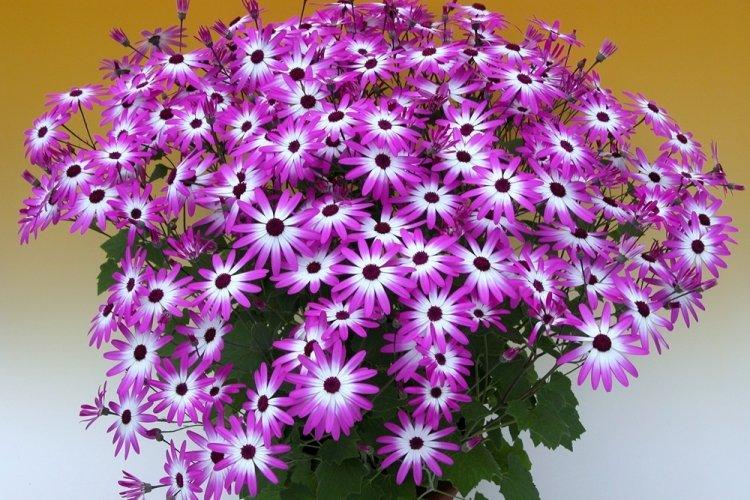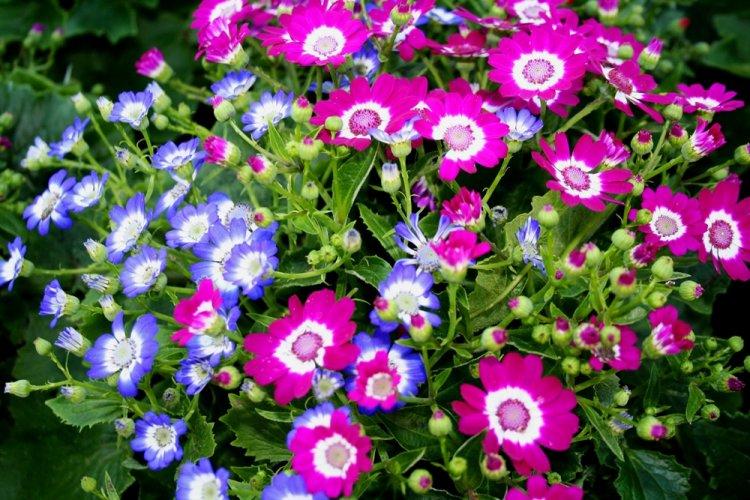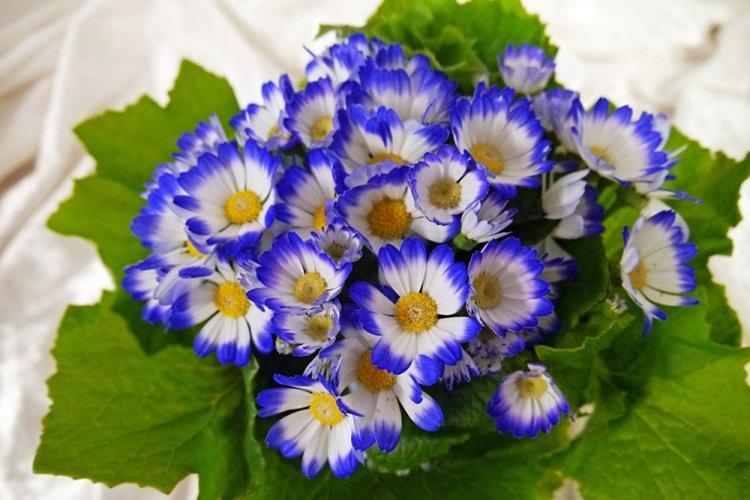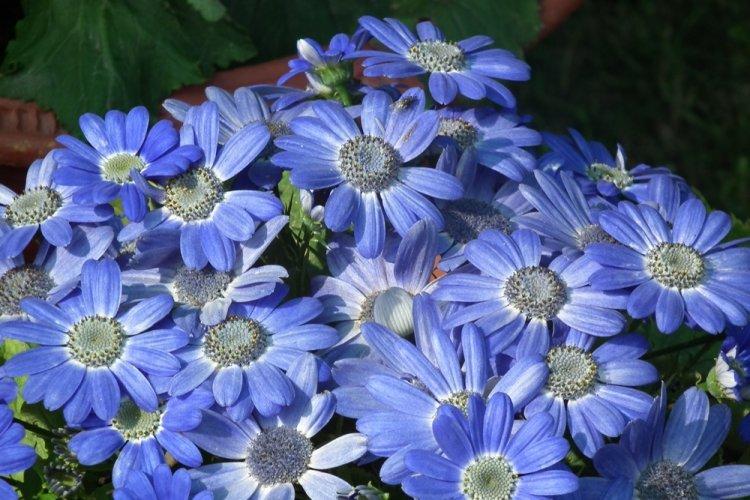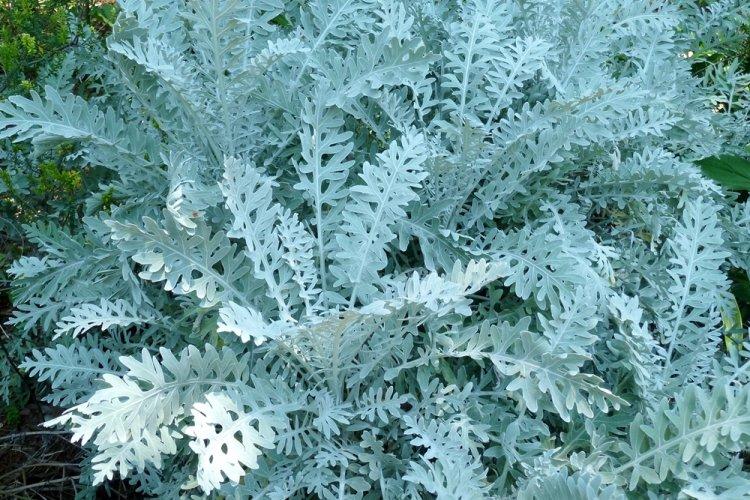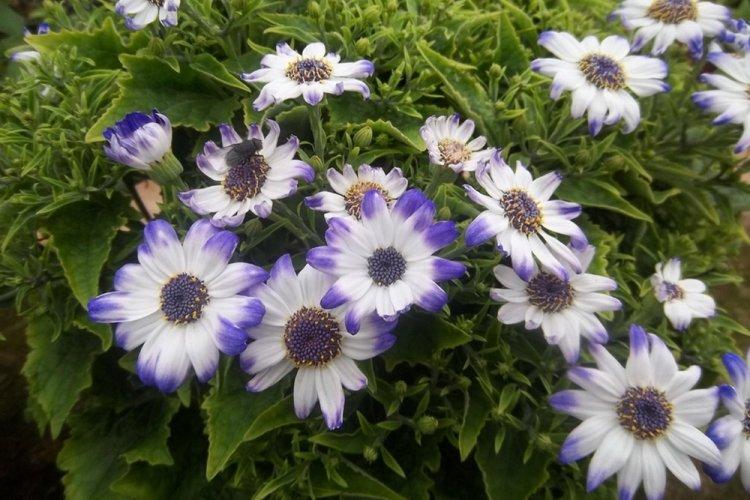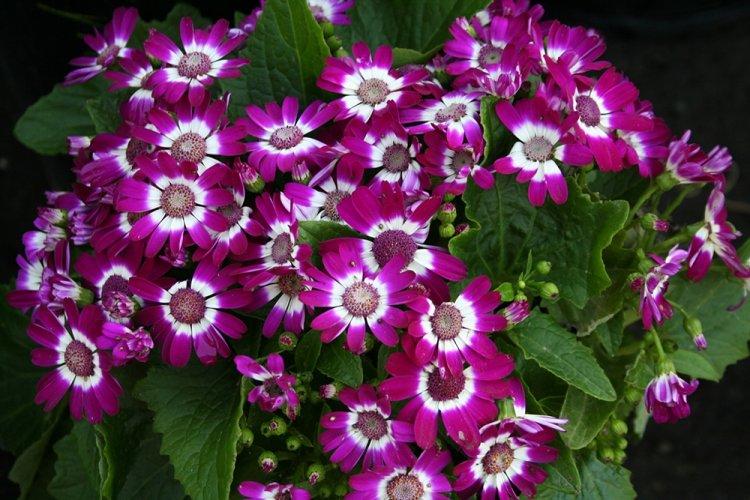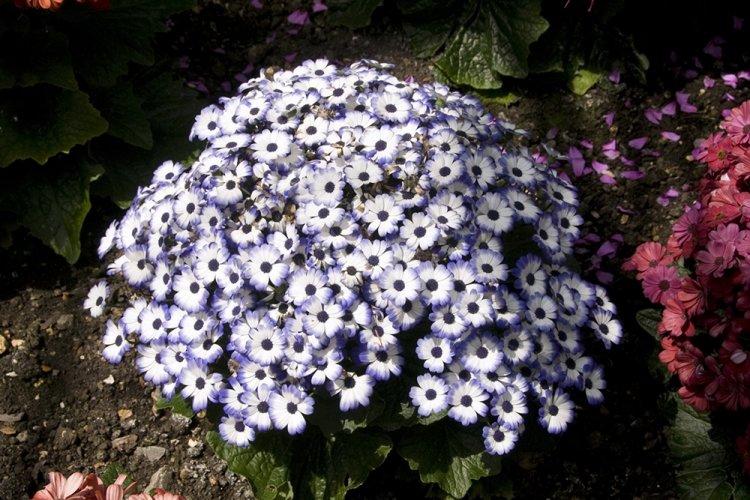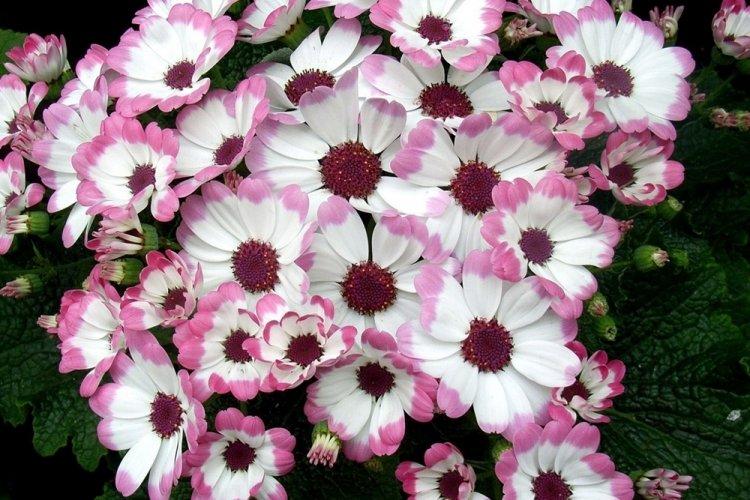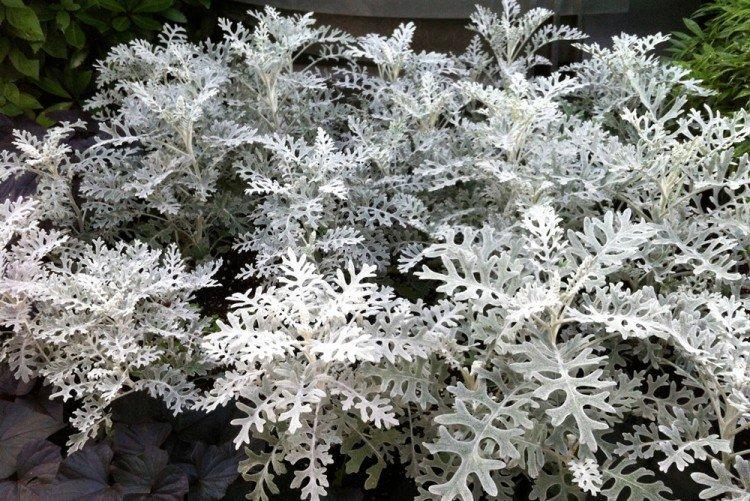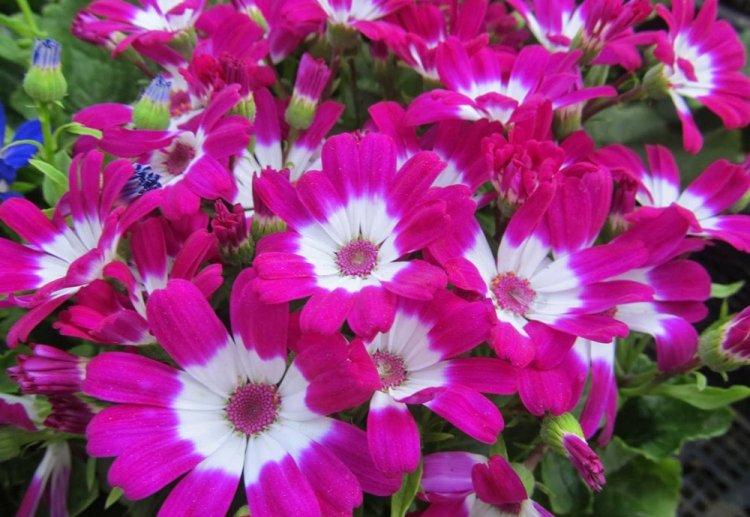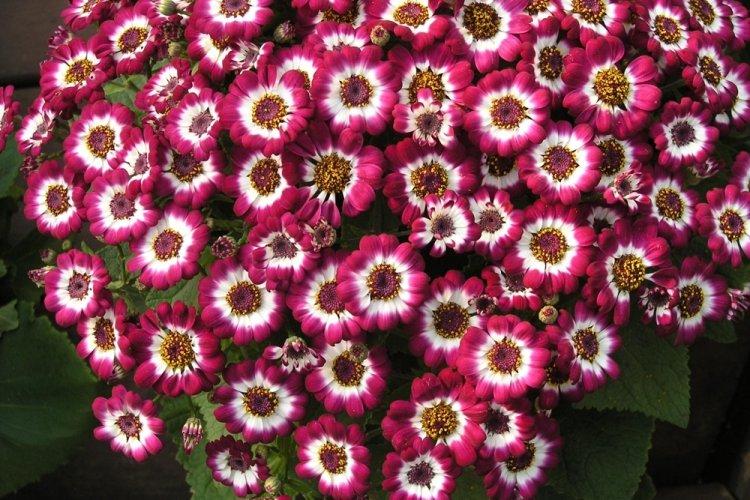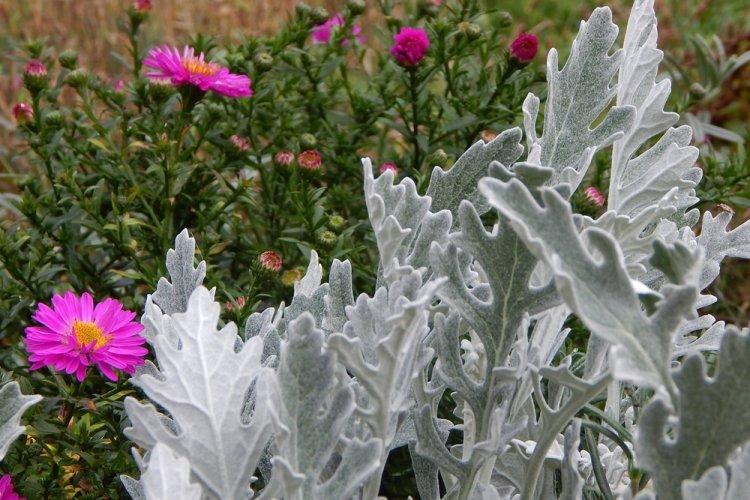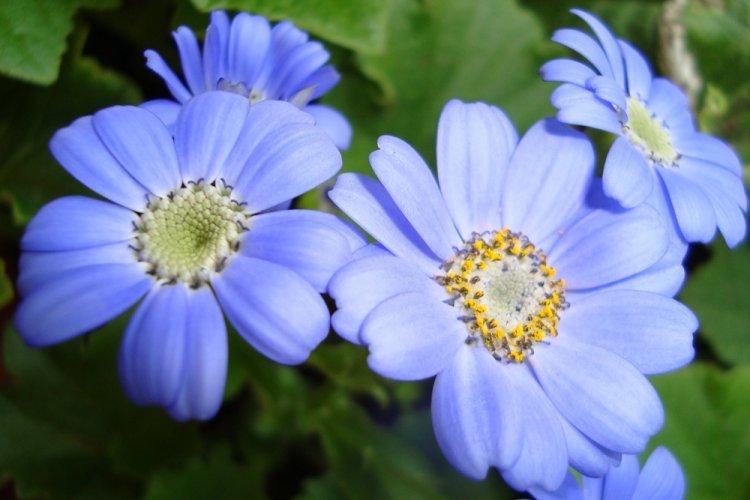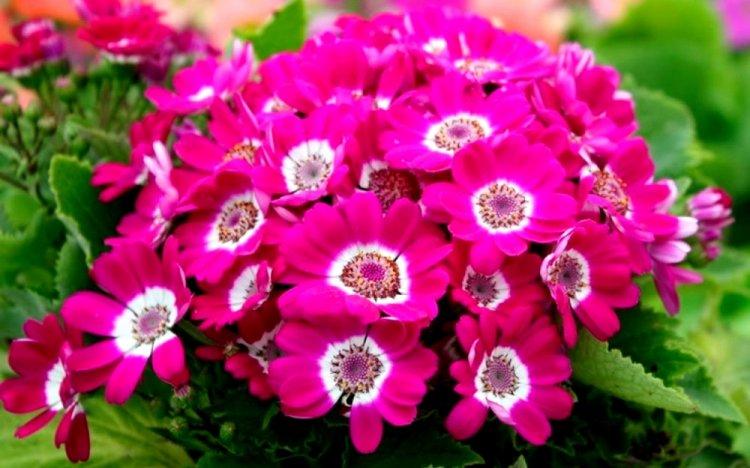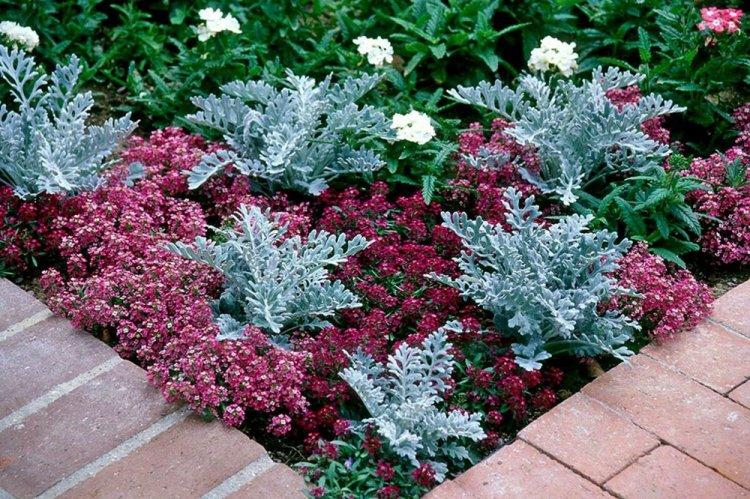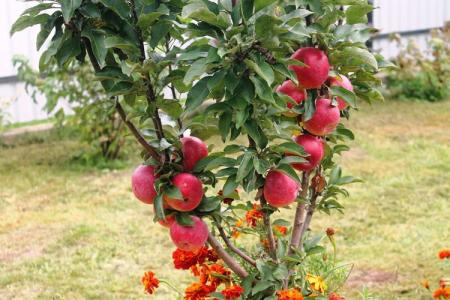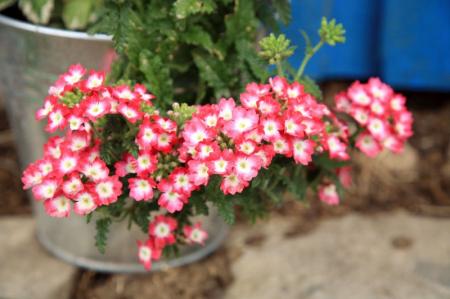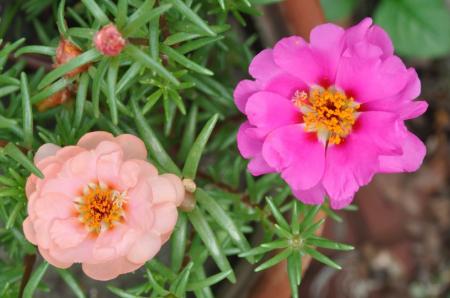
Among the bright decorative asters, the southern cineraria is especially prominent. Inexperienced growers are often not aware of the existence of this flower, and in vain! Finding another such diverse garden plant is almost impossible. The beauty of cineraria is very simple, but very effective and catchy. Let's tell you more!
general information
Cineraria is a herbaceous plant or shrub, so it is good in landscape compositions. The unusual and sonorous name of the flower literally translates as "ashy". This is a tropical guest who came to us straight from the African tropics and from Madagascar.
The height of different varieties of cineraria differs several times: from 30 to 90-95 cm. They have branched stems with large leaf blades covered with a shallow edge. Cineraria leaves are oval, lyre-shaped, or dissected.
Cineraria has large corymbose inflorescences of all colors of the rainbow from yellow to purple. Large baskets of smooth or terry petals surround a voluminous velvety center. The beauty of flowering will delight you from the beginning of summer to cold weather. Some species are used in the preparation of bouquets and are grown specifically for the cut.
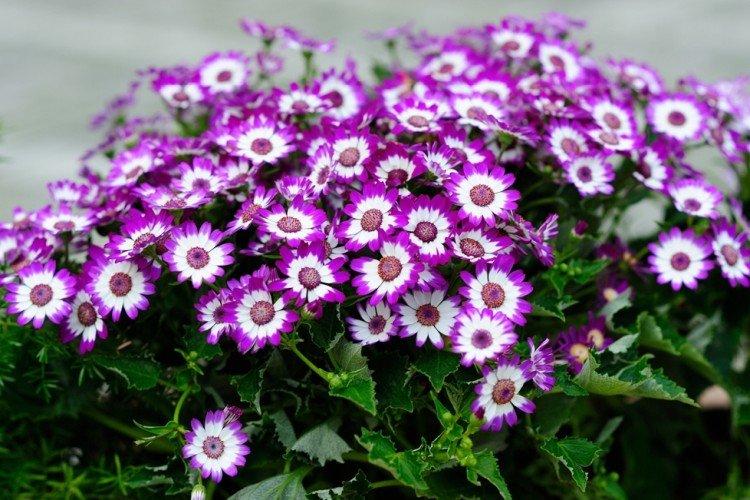
Types of cineraria
There are almost one and a half thousand varieties and hybrids of cineraria, so it is simply impossible to consider all of them. Breeders have bred a lot of decorative varieties that differ in the color and appearance of the petals. They can be roughly divided into several large categories.
Bloody cineraria
This species is most often grown in apartments, therefore it is called indoor. A feature of bloody cineraria is large, abundant and very bright flowers of all kinds of shades. There are also garden ornamental varieties that grow with lush shrubs up to 70-90 cm.

Seaside cineraria
For the characteristic silvery edge of dissected leaves, seaside cineraria is also called silvery. Her flowering is not very remarkable, and the yellow baskets do not go well with the decorative crown. There are undersized openwork dwarf shrubs up to 20-25 cm, and there are large bushes up to 45-50 cm with large toothed leaves.

Graceful Cineraria
The stems of the graceful cineraria branch out so strongly that an adult shrub resembles an elastic ball. Flowers-baskets grow in groups in voluminous corymbose inflorescences. There are smooth and terry varieties in all kinds of shades, but pink and purple are more common.
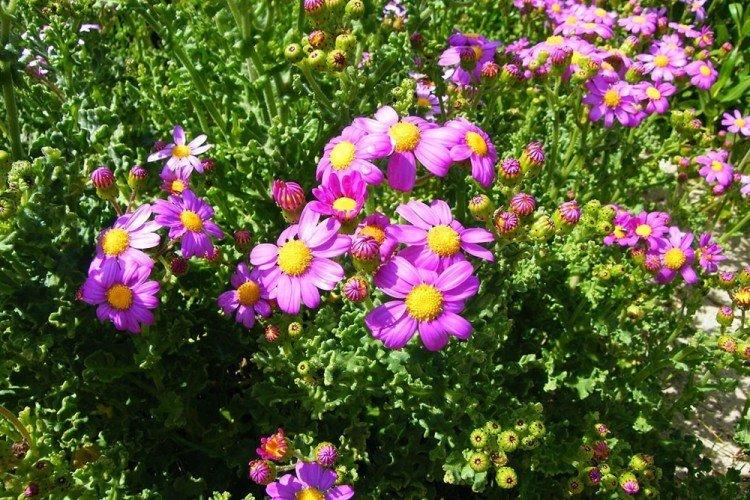
Cineraria care
Cineraria is grown in gardens and in rooms without significant differences in care. Unless it lives in the open field for 1-2 years, and in a flowerpot it can bloom safely all winter for many more years.
Temperature and lighting
Cineraria does not tolerate aggressive heat and feels comfortable at temperatures up to 20 degrees. She feels good in the room even at a temperature of 10-15 degrees. And at rest, cineraria is in order even on an unheated glazed balcony. The hotter the cineraria, the faster it will fade, so it is better to choose a place in partial shade.

Watering
Cineraria tolerates drought well, unlike most flowering ones. She has enough natural precipitation, because long tenacious roots perfectly extract enough moisture. But if you are planting a flower for decorative purposes, it is better to top it up in the heat so that it does not wither. After watering, the soil was loosened well for oxygenation.
However, it is very important not to transfuse cineraria, otherwise it will rot. And try not to get on the leaves and stems, because the shallow edge will retain moisture. And in summer it is practically guaranteed sunburn on the plates.
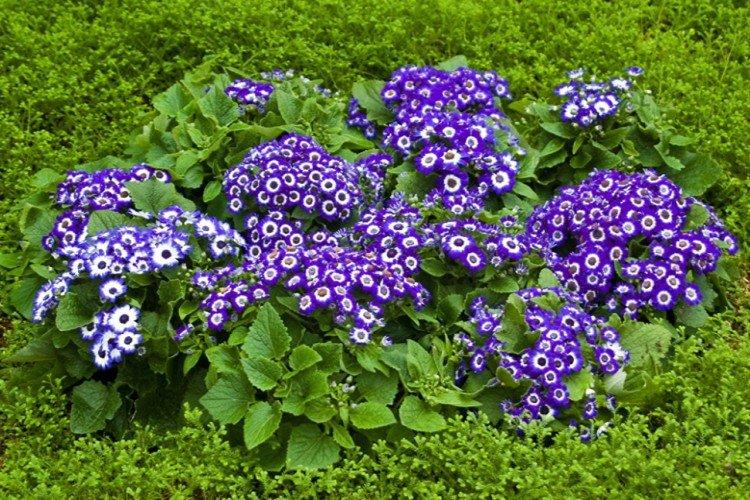
Fertilizers and feeding
Like all flowering plants, cineraria needs nutrients. Complex fertilizers are applied every two weeks from the formation of buds. Alternate organic supplements with mineral supplements for greater effect.
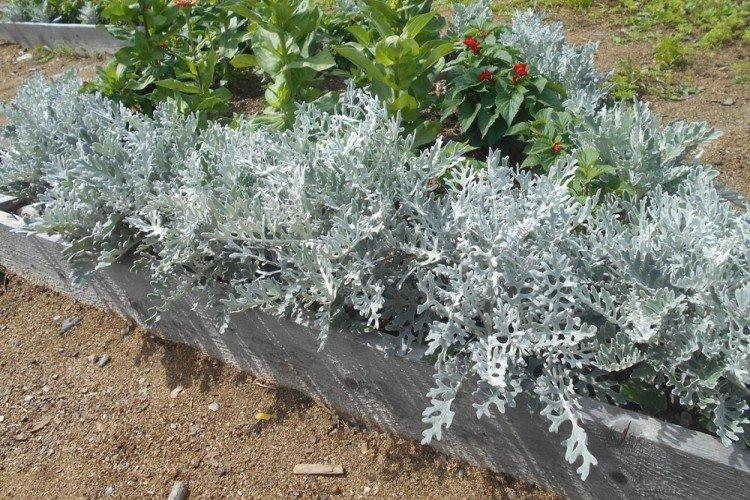
Transfer
Do not rush to transplant a new freshly purchased bush, because first it needs to adapt and bloom once. After that, remove all inflorescences, shorten the long shoots and transplant the flower together with the lump into a larger pot.

Reproduction
To propagate cineraria by cuttings, take side branches about 10 cm long. It is better to use a preparation to accelerate the formation of roots and deepen the cutting into a mixture of soil and sand. Like a young seedling, it needs an impromptu greenhouse and regular watering - about every 3-4 days.
Cineraria reproduces well by seeds, especially if they are previously soaked in a growth stimulator. Spread them over the nutritious soil mixture and leave them under the foil in a bright, warm room. Air the seedlings daily and moisten them with a spray bottle as needed.

Cineraria seedlings are very small and sensitive, so treat them with extreme care. When all the shoots have sprouted, remove the film and move the container to the sun. After the first leaves appear, they can be planted in their own pots.
Cineraria is transplanted into the ground only after warm weather has finally settled on the street. Plant seedlings about 25 cm apart and use peat for cover. By the middle of summer, such seedlings will bloom safely.
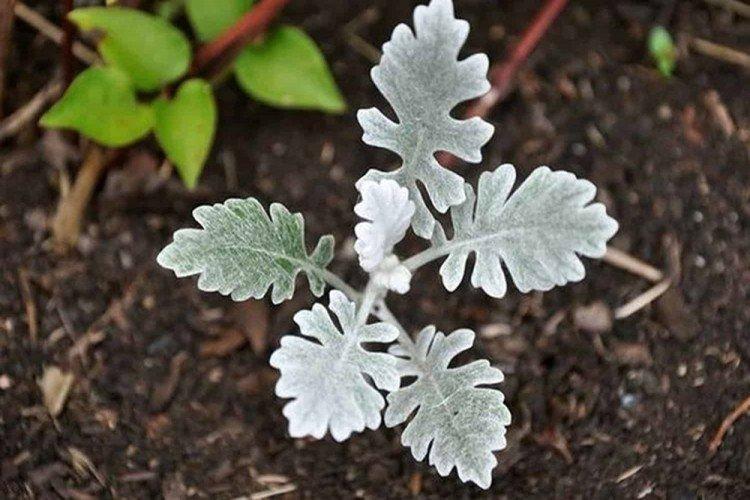
Pruning
In order for the cineraria to continue to bloom beautifully and for a long time, all faded buds must be removed immediately. A seasonal haircut is needed to rejuvenate the flower and refresh its appearance. It is enough to remove all dry, damaged and yellowed stems and leaves.
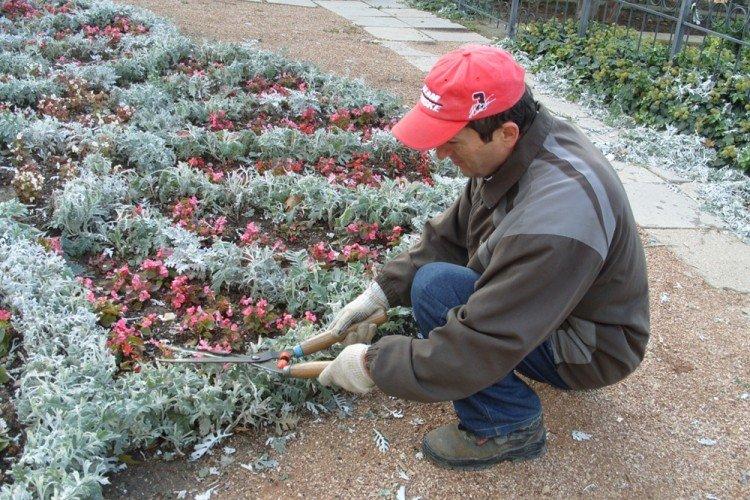
Pest and disease control
Cineraria is known for its stable immunity, thanks to which it is almost not afraid of parasites and pests. Most problems start from improper care that can be easily corrected.
Do not overfill the soil, otherwise the flower may begin to rot and rust will appear on the leaves. Wet, fuzzy plates are an ideal environment for powdery mildew. In these cases, it is almost impossible to cure the damaged plant, and it is better to get rid of it before the disease has spread further.
Rarely, a spider mite or aphid settles on cineraria. If so, you will need insecticides or homemade nettle and soap solutions. If a whitefly has settled in your garden, the mechanism of dealing with it is exactly the same.
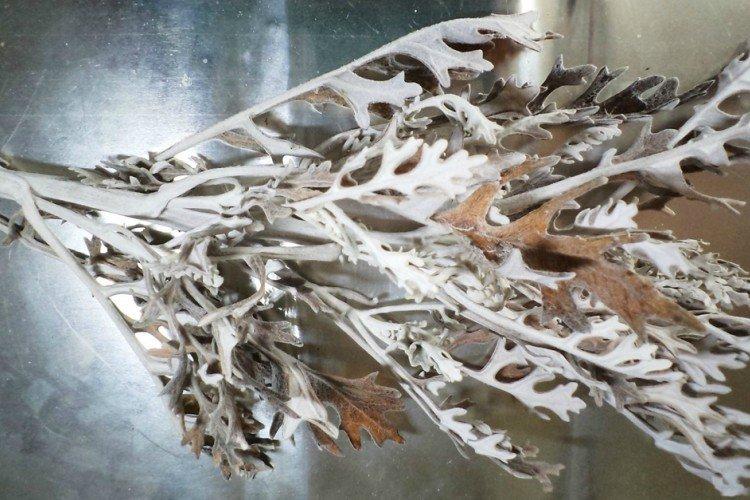
Cineraria - photo
Cineraria is prized for its amazing combination of beauty and versatility. If you have not yet seen this southern beauty in the flower beds - take a look in our photo selection!
